Harvesting Drones and Robotics: Redefining Farming for a New Era!
Table of Contents
Section 1: Introduction

In the vast expanses of agriculture, a silent revolution is reshaping the way we cultivate our land. Traditional farming methods, facing challenges from every corner, are giving way to a new era marked by efficiency and innovation. Enter harvesting drones and robotics – the unsung heroes poised to redefine the landscape of farming.
As we stand at the crossroads of necessity and advancement, these technological marvels offer a glimpse into a future where farming isn’t just a task but a precision-driven, resource-optimized endeavor.
In this article, we unravel the exciting narrative of “Harvesting Drones and Robotics: The Future of Efficient Farming Unveiled!” Join us on this journey through the fields of change, where the seeds of innovation are sprouting a harvest of unprecedented possibilities.
Section 2: The Need for Innovation in Farming
Farming, once characterized by its simplicity, now grapples with a multitude of challenges that demand a paradigm shift. Traditional agricultural practices, reliant on manual labor and unpredictable weather patterns, are proving insufficient in meeting the growing demands of a global population.
This section explores the pressing need for innovation in farming and the emergence of precision agriculture as a crucial catalyst for change.
Current Challenges in Traditional Farming
In the traditional farming landscape, uncertainties abound. Unpredictable weather conditions, labor shortages, and the constant battle against pests and diseases create a complex tapestry of challenges. Farmers find themselves at the mercy of nature, often facing yield losses and increased operational costs. The need for a more reliable and efficient approach to agriculture has never been more evident.
Introduction to Precision Agriculture
Enter precision agriculture, a transformative concept that leverages technology to bring a scientific precision to farming practices. Precision agriculture integrates data-driven insights, satellite imagery, and advanced analytics to optimize every aspect of the farming process.
From planting and irrigation to harvesting, this approach enables farmers to make informed decisions, ensuring maximum output with minimal resources.
Innovation in farming is not just a desire; it’s a necessity born out of the need to overcome these challenges. Precision agriculture, with its data-centric approach, forms the foundation upon which the advancements in harvesting drones and robotics stand.
As we delve deeper into the realm of farming innovation, it becomes apparent that the status quo is no longer sustainable. The need for a more efficient, resilient, and sustainable agriculture system has given rise to a wave of technological solutions, with harvesting drones and robotics at the forefront of this revolution.
In the subsequent sections, we will explore the benefits and implications of integrating these cutting-edge technologies into the age-old art of farming.
Section 3: Benefits of Harvesting Drones and Robotics
In the ever-evolving landscape of agriculture, the integration of harvesting drones and robotics brings forth a myriad of benefits that promise to reshape the way we cultivate and harvest crops. This section unpacks the advantages that these innovative technologies offer, ushering in an era of increased efficiency, cost-effectiveness, and precision in farming practices.
Increased Efficiency and Productivity
One of the primary benefits of harvesting drones and robotics lies in their ability to significantly enhance efficiency and productivity. Unlike traditional methods that rely heavily on manual labor, drones equipped with advanced sensors and robotic arms can navigate fields swiftly and with precision. This results in quicker and more thorough harvesting, reducing the time it takes to bring crops from the field to the market.
Cost-Effectiveness and Resource Optimization
The implementation of harvesting drones and robotics presents a cost-effective alternative to traditional farming practices. By automating tasks that would otherwise require a substantial labor force, farmers can streamline operations and reduce labor expenses.
Additionally, these technologies contribute to resource optimization by precisely applying fertilizers and pesticides, minimizing waste and environmental impact.
Precision in Harvesting and Crop Management
Precision is the hallmark of harvesting drones and robotics. Equipped with advanced sensors and imaging technology, these machines can identify ripe crops, assess soil conditions, and make real-time decisions for precise harvesting.
The result is a reduction in post-harvest losses and an improvement in the overall quality of the yield. Farmers can optimize crop management strategies based on accurate data, ensuring a sustainable and profitable harvest.
As we witness the unfolding benefits of harvesting drones and robotics, it becomes clear that these technologies are not just futuristic concepts but practical solutions to the challenges faced by modern agriculture. The efficiency gains, cost-effectiveness, and precision offered by these innovations are reshaping the agricultural landscape, paving the way for a more sustainable and productive future.
The subsequent sections will delve deeper into the types of harvesting drones, their integration with artificial intelligence, and the potential challenges and concerns associated with their widespread adoption.
Section 4: Types of Harvesting Drones and Robotics


The realm of harvesting drones and robotics is diverse, with various technologies tailored to specific agricultural needs. Understanding the types of these cutting-edge machines is crucial in appreciating the depth of innovation they bring to the farming landscape. In this section, we explore the different categories of harvesting drones and robotics, shedding light on their unique features and applications.
Overview of Different Drone and Robotic Technologies
**1. Aerial Drones for Crop Surveillance
Aerial drones equipped with high-resolution cameras and multispectral sensors are deployed for crop surveillance. These drones provide real-time data on crop health, allowing farmers to identify potential issues such as pest infestations or nutrient deficiencies.
**2. Ground-based Harvesting Robots
These robots operate at ground level and are designed to navigate through fields, identifying ripe crops, and executing precise harvesting maneuvers. Equipped with robotic arms and computer vision technology, they ensure gentle and efficient harvesting without damage to the crops.
**3. Autonomous Harvesting Vehicles
Autonomous vehicles, resembling small tractors, are programmed to perform various tasks, including planting, weeding, and harvesting. These vehicles leverage GPS technology and advanced algorithms to navigate through fields, optimizing the farming process.
**4. Swarm Robotics for Large-Scale Operations
Swarm robotics involve the coordination of multiple small robots working together simultaneously. This approach is particularly beneficial for large-scale operations, where multiple tasks need to be performed concurrently, such as harvesting multiple rows of crops simultaneously.
Specific Applications in Harvesting Crops
**1. Fruit and Vegetable Harvesting Drones
Tailored for delicate crops, these drones use precision tools and soft gripping mechanisms to harvest fruits and vegetables without causing damage. This ensures a higher quality yield and reduces post-harvest losses.
**2. Combine Harvesters with AI Integration
Traditional combine harvesters are now being integrated with artificial intelligence to enhance their capabilities. These intelligent machines can adapt to varying crop conditions, adjusting harvesting parameters in real-time for optimal efficiency.
Harvesting drones and robotics are not one-size-fits-all solutions; rather, they are a spectrum of technologies catering to the diverse needs of modern agriculture.
The synergy between aerial and ground-based systems, combined with the integration of artificial intelligence, showcases the versatility and adaptability of these innovative machines. As we move forward, the article will delve into the role of AI in farming, the potential challenges, and the real-world impact of harvesting drones and robotics through case studies.
Section 5: Integration of AI in Farming
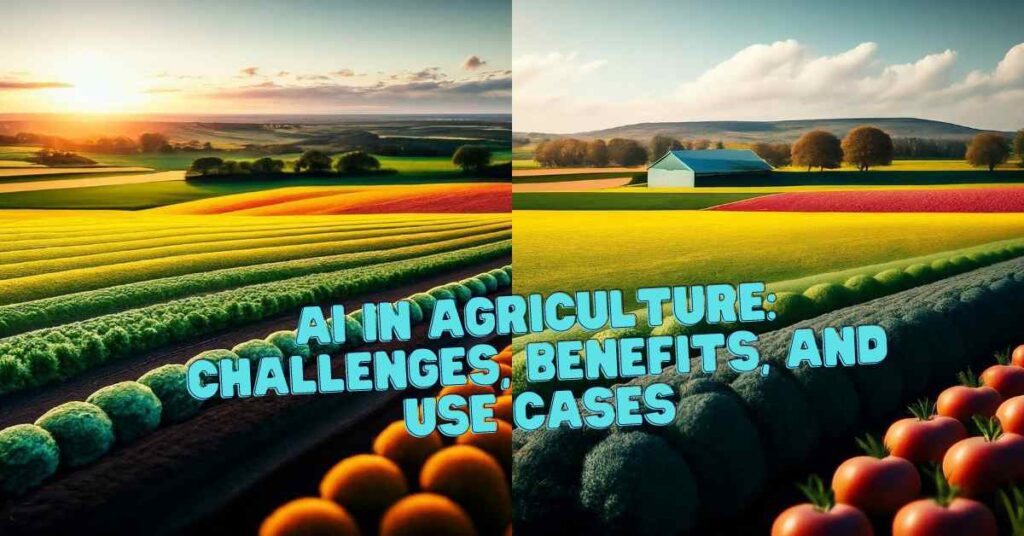

In the dynamic landscape of modern agriculture, the integration of artificial intelligence (AI) stands as a transformative force, amplifying the capabilities of harvesting drones and robotics. This section explores the pivotal role AI plays in farming, revolutionizing decision-making processes and elevating precision agriculture to new heights.
Role of Artificial Intelligence in Enhancing Farming Practices
**1. Data-Driven Decision Making
AI algorithms process vast amounts of data collected by harvesting drones and robotics, providing farmers with actionable insights. This data-driven approach enables precise decision-making regarding irrigation, fertilization, and harvesting schedules, optimizing crop yields.
**2. Predictive Analytics for Crop Management
AI-powered systems utilize historical and real-time data to predict crop diseases, pest outbreaks, and other potential challenges. This proactive approach allows farmers to implement preventive measures, reducing the reliance on reactive and often less effective solutions.
**3. Adaptive Harvesting Strategies
Harvesting drones and robots integrated with AI exhibit adaptive harvesting strategies. These systems can dynamically adjust their actions based on changing environmental conditions, ensuring optimal efficiency and minimal waste.
Examples of AI-Driven Innovations in Agriculture
**1. Weed Recognition and Targeted Herbicide Application
AI algorithms can distinguish between crops and weeds with high accuracy. Harvesting drones equipped with this technology can target specific areas, applying herbicides only where necessary, reducing environmental impact and minimizing chemical usage.
**2. Disease Detection and Prevention
AI-powered image recognition can identify early signs of crop diseases. Harvesting drones equipped with this capability can survey vast fields, pinpointing affected areas and allowing farmers to take swift action to prevent the spread of diseases.
**3. Yield Prediction and Optimization
AI algorithms analyze historical data, weather patterns, and crop health information to predict yields accurately. This information empowers farmers to optimize planting and harvesting schedules, maximizing overall productivity.
As we witness the fusion of AI with harvesting drones and robotics, it becomes evident that the marriage of data analytics and agricultural technology is reshaping the very foundations of farming.
The subsequent sections will delve into the challenges associated with these advancements, explore real-world case studies showcasing the impact of these technologies, and gaze into the future of farming technology.
Section 6: Challenges and Concerns


While the integration of harvesting drones and robotics, coupled with artificial intelligence, brings unprecedented advancements to agriculture, it is not without its challenges and concerns. This section addresses the potential drawbacks and considerations that accompany the adoption of these cutting-edge technologies.
Addressing Potential Drawbacks
**1. High Initial Investment Costs
The upfront costs associated with acquiring and implementing harvesting drones and robotic systems, especially those integrated with AI, can be substantial. This may pose a barrier to entry for smaller-scale farmers who may struggle with the initial financial investment.
**2. Technical Complexity and Training
Operating and maintaining advanced farming technologies requires a certain level of technical expertise. Farmers need training to effectively manage and troubleshoot issues with harvesting drones and robotics. Ensuring widespread accessibility to training programs becomes crucial for successful adoption.
Importance of Responsible and Sustainable Use
**1. Environmental Impact of Battery-Powered Drones
The use of battery-powered drones raises concerns about environmental impact, considering the production and disposal of batteries. Exploring sustainable energy alternatives and efficient battery recycling methods is imperative for mitigating the ecological footprint.
**2. Data Security and Privacy
With the abundance of data collected by harvesting drones and AI systems, ensuring robust data security and privacy measures becomes paramount. Farmers and technology providers must collaborate to establish secure protocols for data storage and transmission.
Balancing Innovation with Sustainability
**1. Resource Allocation and Ethical Considerations
The use of advanced technologies should align with ethical considerations, avoiding overuse of resources and minimizing negative impacts on local ecosystems. Striking a balance between innovation and sustainability is essential for the long-term viability of farming practices.
**2. Potential Job Displacement
The automation of certain farming tasks may lead to concerns about job displacement in rural communities heavily dependent on agriculture. Efforts should be directed towards providing alternative employment opportunities and upskilling initiatives.
As we navigate the path towards a technologically advanced agricultural future, it is crucial to confront these challenges head-on. Acknowledging and addressing these concerns is an integral part of ensuring the responsible and sustainable integration of harvesting drones and robotics in farming practices.
In the subsequent sections, we will explore real-world case studies, providing insights into successful implementations, and discuss the future trends and global adoption of these transformative technologies.
Section 7: Case Studies
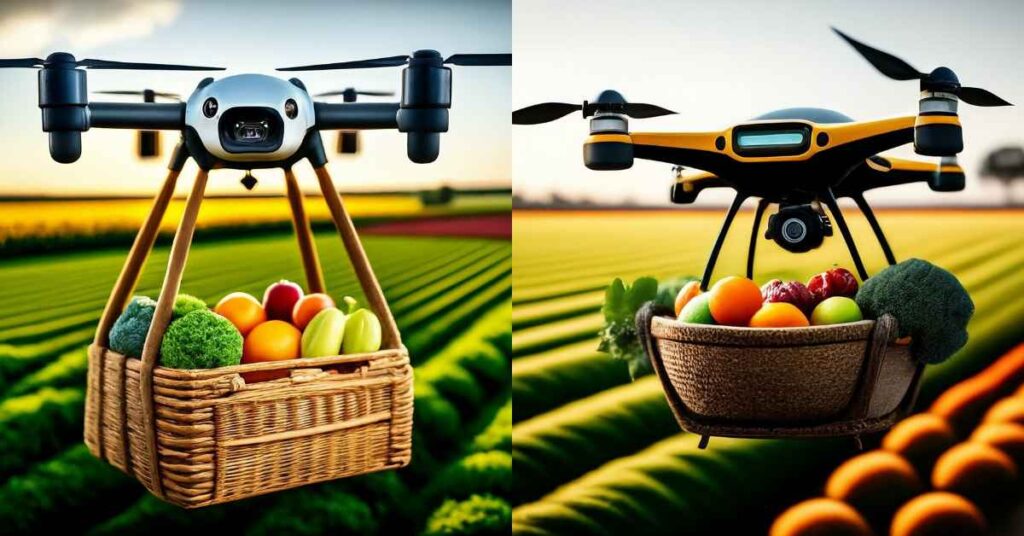

Real-world applications of harvesting drones and robotics in agriculture provide tangible evidence of the transformative impact these technologies can have. In this section, we delve into case studies showcasing successful implementations, highlighting increased yields, reduced environmental impact, and improved overall efficiency.
Precision Harvesting in Vineyards: A Success Story
Challenge:
Vineyards, with their delicate grape clusters, present a unique challenge for traditional harvesting methods. The risk of damage during manual harvesting is high, impacting the quality of the grapes.
Solution:
Aerial drones equipped with specialized gripping mechanisms were employed for precision harvesting in vineyards. These drones, guided by AI algorithms, identified ripe clusters and gently harvested them without causing damage.
Results:
Significantly reduced grape damage during harvesting.
Increased overall yield due to precise harvesting.
Optimized labor costs and improved operational efficiency.
Autonomous Tractor for Large-Scale Crop Management
Challenge:
Large-scale farms face the challenge of managing extensive fields efficiently. Traditional methods often result in uneven distribution of resources and varying crop conditions.
Solution:
Autonomous tractors equipped with AI capabilities were deployed for crop management. These tractors used real-time data to adjust planting density, irrigation levels, and fertilization, ensuring uniform crop growth.
Results:
Improved crop uniformity and overall health.
Reduced resource wastage through targeted applications.
Increased efficiency in large-scale farming operations.
Swarm Robotics in Wheat Harvesting
Challenge:
Wheat fields, with their vast expanses, pose a challenge for timely and efficient harvesting. Traditional methods may lead to delays and losses.
Solution:
Swarm robotics, consisting of multiple small harvesting robots, were employed for simultaneous wheat harvesting. Coordinated by AI algorithms, these robots navigated the fields, ensuring a synchronized and speedy harvest.
Results:
Drastic reduction in harvesting time.
Minimized post-harvest losses.
Demonstrated the scalability of swarm robotics for large agricultural operations.
These case studies illustrate the tangible benefits of integrating harvesting drones and robotics into agriculture. From precision harvesting in vineyards to the efficiency gains of autonomous tractors and the scalability of swarm robotics, these technologies are proving their worth in diverse agricultural settings.
As we move forward, global adoption and market trends will shape the future landscape of farming technology. The subsequent sections will delve into these aspects, providing insights into the current status and projections for the widespread use of harvesting drones and robotics in agriculture.
Section 8: Future Trends in Farming Technology
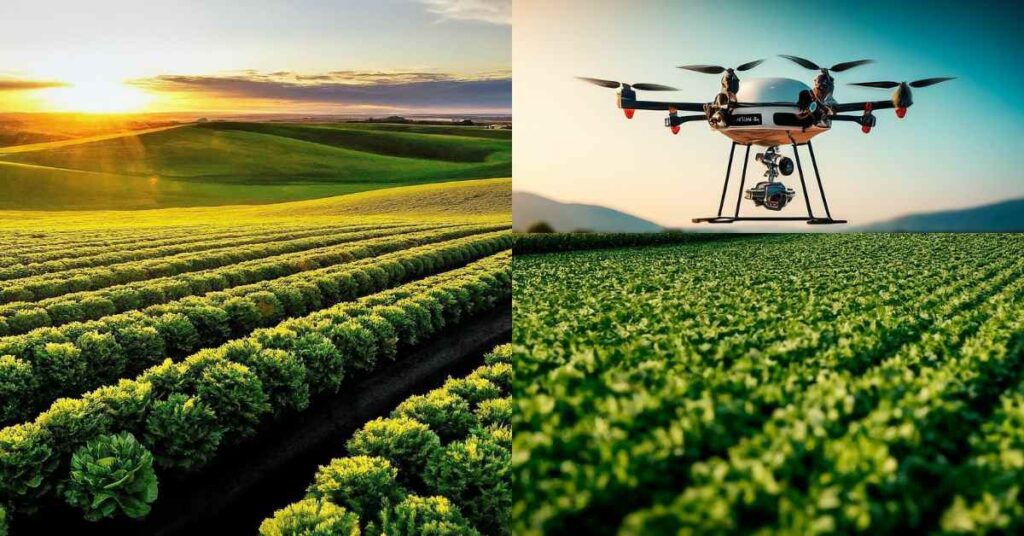

The trajectory of farming technology is set on a course of continuous evolution, and as we navigate the future, several trends are poised to shape the landscape of agriculture. In this section, we explore the anticipated trends that will further propel the integration of harvesting drones and robotics into the forefront of efficient farming practices.
Predictions for the Future of Harvesting Technology
**1. Advancements in AI and Machine Learning
The evolution of artificial intelligence and machine learning is expected to unlock new levels of sophistication in harvesting drones and robotics. Enhanced algorithms will enable these technologies to adapt more seamlessly to dynamic environmental conditions, further optimizing farming processes.
**2. Collaborative Robotics for Enhanced Efficiency
The synergy between humans and robots, known as collaborative robotics or cobotics, is anticipated to become more prevalent. This collaborative approach involves humans working alongside robots, each leveraging their unique strengths. This trend will enhance overall efficiency and address concerns about job displacement.
**3. Smarter Precision Agriculture Systems
The future holds the promise of even smarter precision agriculture systems. These systems will integrate a holistic array of data sources, including satellite imagery, weather patterns, and soil sensors, to provide farmers with comprehensive insights. This level of sophistication will empower farmers to make highly informed decisions for optimal crop management.
Emerging Technologies in the Agriculture Sector
**1. Drone Swarms for Specialized Tasks
The use of drone swarms, where multiple drones work together seamlessly, is anticipated to expand for specialized tasks. This could include tasks such as pollination, targeted pesticide application, and even monitoring of crop health on a large scale.
**2. Blockchain for Transparent Supply Chains
Blockchain technology is expected to play a significant role in creating transparent and traceable supply chains. From the farm to the consumer, blockchain can provide an immutable record of each stage, ensuring the authenticity and quality of agricultural products.
**3. Robotics for Soil Health Management
The focus on soil health is likely to intensify, with robotics playing a key role in soil management. Autonomous robots equipped with sensors can analyze soil conditions in real-time, allowing for precise adjustments in fertilization and irrigation, promoting sustainable farming practices.
As we peer into the future, it’s clear that the integration of harvesting drones and robotics is just the tip of the technological iceberg. The convergence of artificial intelligence, collaborative robotics, and emerging technologies is set to redefine the very essence of farming.
The subsequent sections will explore the current global adoption of these technologies, market trends, and the regulatory landscape that shapes their use in agriculture.
Section 9: Environmental Impact
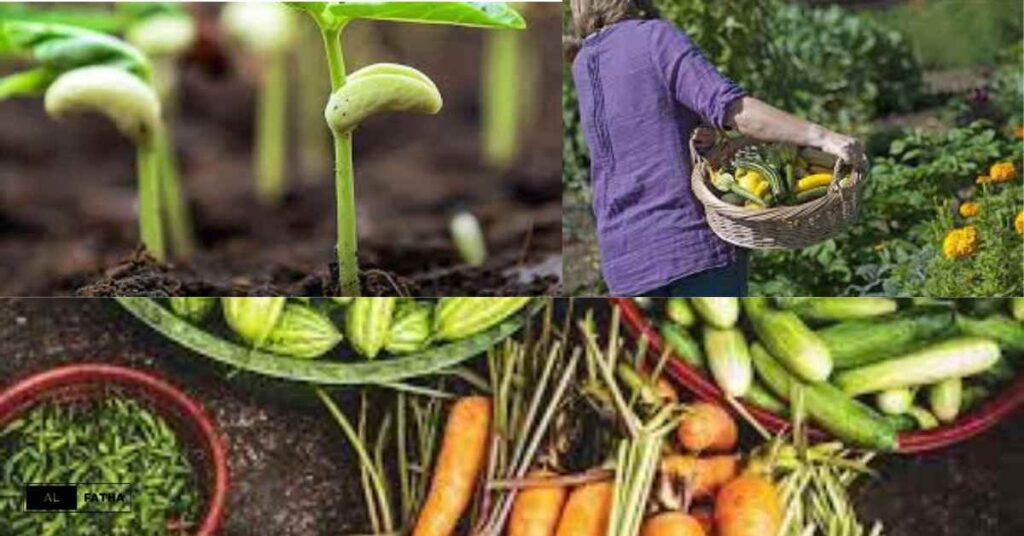

The adoption of harvesting drones and robotics in agriculture not only transforms operational efficiency but also contributes to the broader goals of sustainability and environmental stewardship. In this section, we examine the eco-friendly aspects of these technologies, comparing them with traditional farming methods and emphasizing the potential positive impact on the environment.
Eco-Friendly Aspects of Harvesting Drones
**1. Reduced Chemical Usage
Precision agriculture, enabled by harvesting drones, allows for targeted and precise application of fertilizers and pesticides. This minimizes the need for excessive chemical use, reducing the environmental footprint and preventing contamination of soil and water sources.
**2. Energy-Efficient Operations
Many harvesting drones and robotics are designed to be energy-efficient. Electric-powered drones, for instance, produce fewer emissions compared to traditional farm machinery, contributing to lower carbon footprints and a cleaner environment.
**3. Minimized Soil Disturbance
Ground-based harvesting robots are designed to navigate fields with minimal soil disturbance. Traditional plowing and harvesting methods can lead to soil erosion and degradation, but harvesting robots move with precision, minimizing the impact on soil structure.
Comparison with Traditional Farming Methods
**1. Mitigation of Soil Erosion
Traditional farming methods, often involving extensive plowing, can contribute to soil erosion. Harvesting drones and robotics, with their precise movements, reduce the need for disruptive soil cultivation, preserving soil structure and mitigating erosion.
**2. Water Conservation
Precision agriculture, facilitated by harvesting drones, enables more efficient water use. Automated irrigation systems based on real-time data analysis ensure that crops receive the optimal amount of water, reducing wastage and promoting water conservation.
**3. Biodiversity Preservation
The targeted approach of harvesting drones minimizes the impact on surrounding ecosystems. Reduced chemical use and soil disturbance contribute to the preservation of biodiversity, as these technologies enable farmers to cultivate crops with a more minimal ecological footprint.
The integration of harvesting drones and robotics into farming practices not only enhances productivity but also aligns with global efforts to promote sustainable and eco-friendly agriculture.
As we explore the environmental benefits, it becomes evident that these technologies offer a pathway to more responsible and resource-efficient farming. In the subsequent sections, we will delve into the global adoption and market trends, exploring the current status of harvesting drones and robotics on a global scale.
Section 10: Global Adoption and Market Trends
The global adoption of harvesting drones and robotics in agriculture is a dynamic landscape shaped by technological advancements, economic considerations, and the pursuit of sustainable farming practices. In this section, we delve into the current status of global adoption and explore the prevailing market trends that define the trajectory of these transformative technologies.
Current Status of Global Adoption
**1. North America: Pioneering Precision Agriculture
North America, particularly the United States and Canada, leads the global adoption of harvesting drones and robotics. The region’s large-scale farms embrace precision agriculture technologies, leveraging drones and robots for tasks ranging from planting to harvesting.
**2. Europe: Embracing Sustainable Agriculture
European countries, driven by a commitment to sustainable agriculture and environmental conservation, are rapidly adopting harvesting drones and robotics. The European Union’s agricultural policies encourage the use of technology to optimize resource utilization and reduce environmental impact.
**3. Asia-Pacific: Technology Integration in Agriculture
Countries in the Asia-Pacific region, including China, Japan, and Australia, are integrating harvesting drones and robotics into their agriculture sectors. The need for increased efficiency to feed growing populations and the availability of advanced technologies drive adoption in this region.
Market Trends and Projections
**1. Rise in Demand for Precision Agriculture Solutions
The demand for precision agriculture solutions, including harvesting drones and robotics, is on the rise. Farmers seek technologies that enable them to make data-driven decisions, optimize resource use, and enhance overall operational efficiency.
**2. Increasing Investment in AgTech Startups
The agriculture technology (AgTech) sector is witnessing a surge in investments. Venture capitalists and agricultural companies are recognizing the potential of harvesting drones and robotics, leading to increased funding for startups focused on developing innovative solutions.
**3. Integration of AI and Machine Learning
The integration of artificial intelligence and machine learning is a dominant trend. Harvesting drones and robotics equipped with advanced AI algorithms offer more sophisticated decision-making capabilities, further enhancing their utility in agriculture.
Future Considerations and Potential Changes in Regulations
**1. Regulatory Frameworks for Drone Use
The regulatory landscape for drone use in agriculture is evolving. Governments worldwide are working to establish clear guidelines and frameworks to ensure the safe and responsible deployment of harvesting drones. Future regulations may shape the extent of drone adoption in agriculture.
**2. Global Collaboration for Sustainable Agriculture
Recognizing the global nature of agriculture and its impact on the environment, there is an increasing emphasis on international collaboration. Initiatives promoting sustainable farming practices, supported by the integration of technology, are likely to gain prominence on the global stage.
The global adoption of harvesting drones and robotics is a testament to the transformative potential of these technologies in addressing the challenges faced by the agriculture sector. As we explore the market trends and future considerations, it’s clear that the trajectory of these technologies is not only driven by innovation but also by the collective effort to build a more sustainable and efficient future for farming.
In the following sections, we will delve into the regulatory landscape, investment opportunities, and the perspectives of farmers who have embraced these technologies.
Section 11: Regulatory Landscape
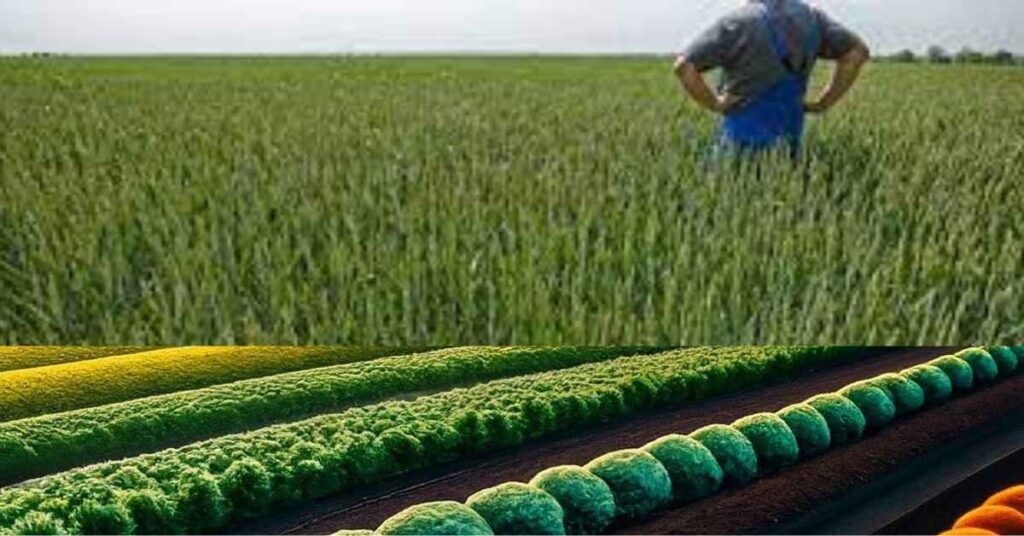

The integration of harvesting drones and robotics into agriculture brings about a complex regulatory landscape, as governments strive to balance technological innovation with safety, privacy, and environmental concerns. In this section, we examine the existing regulations governing the use of drones and robotics in farming and explore potential changes on the horizon.
Overview of Existing Regulations for Drone and Robotic Use in Farming
**1. Federal Aviation Administration (FAA) Regulations (USA)
In the United States, the Federal Aviation Administration (FAA) oversees the use of drones in agriculture. Operators must adhere to regulations that address aspects such as drone registration, flight restrictions, and compliance with airspace regulations. Special considerations are made for agricultural drone use, including the need for appropriate certifications and permissions.
**2. European Union (EU) Regulations
The European Union has implemented regulations to ensure the safe and responsible use of drones in agriculture. These regulations cover issues such as drone registration, operator licensing, and adherence to privacy and data protection laws. The EU emphasizes the importance of risk assessments and compliance with specific operational limitations.
**3. Civil Aviation Administration of China (CAAC) Guidelines
In China, the Civil Aviation Administration of China (CAAC) regulates the use of drones in agriculture. Guidelines include requirements for drone registration, pilot qualifications, and compliance with no-fly zones. The CAAC prioritizes safety and the prevention of airspace violations.
Future Considerations and Potential Changes in Regulations
**1. Evolution of Drone Certification Standards
As the technology evolves, regulatory bodies may introduce updated certification standards for drones used in agriculture. This could include requirements for advanced safety features, remote identification capabilities, and compliance with environmental standards.
**2. Data Security and Privacy Regulations
The increasing use of data in precision agriculture raises concerns about data security and privacy. Future regulations may focus on ensuring secure storage and transmission of agricultural data, as well as establishing clear guidelines for the ethical use of data collected by harvesting drones and robotics.
**3. International Collaboration for Standardization
Recognizing the global nature of agricultural technology, there is a growing need for international collaboration to establish standardized regulations. Harmonizing regulations across countries can facilitate the global adoption of harvesting drones and robotics, ensuring consistent safety and operational standards.
As harvesting drones and robotics become integral to modern agriculture, regulatory frameworks play a crucial role in shaping their responsible and widespread use. Changes in regulations will likely be driven by advancements in technology, safety considerations, and the need to address emerging challenges.
In the subsequent sections, we will explore investment opportunities in farming technology and gain insights into the perspectives of farmers who have embraced these transformative technologies.
Section 12: Investment Opportunities
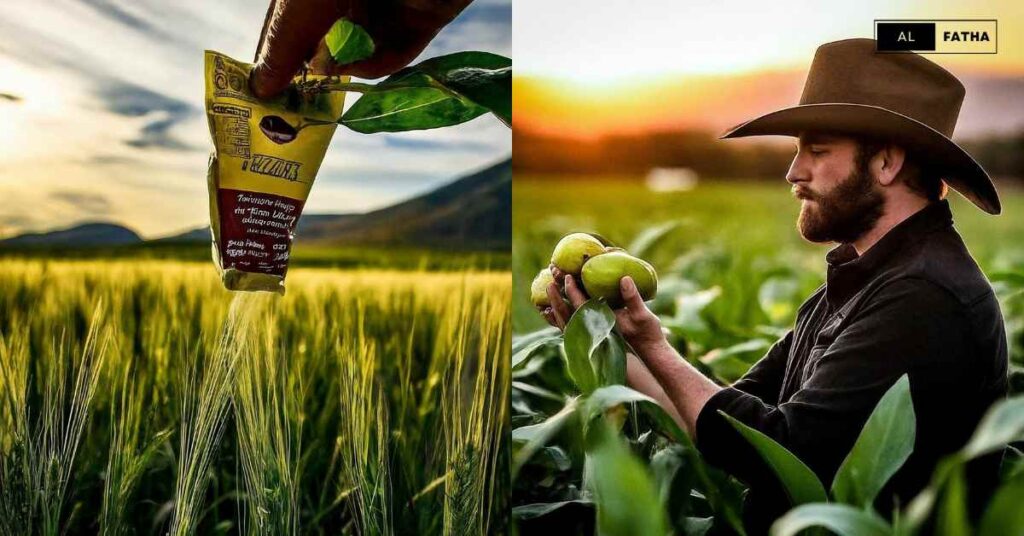

The rapid evolution of harvesting drones and robotics in agriculture has created a fertile ground for investment opportunities. Entrepreneurs, venture capitalists, and established agricultural companies are increasingly recognizing the potential of these technologies to revolutionize the industry.
In this section, we explore the various investment opportunities available and how businesses can capitalize on the growing trend.
Diversification of Investment Portfolios
**1. Venture Capital in AgTech Startups
Venture capital firms are actively investing in AgTech startups that specialize in harvesting drones, robotics, and precision agriculture. Entrepreneurs developing innovative solutions in automation, AI integration, and sustainable farming practices are attracting significant funding.
**2. Established Agricultural Companies
Established agricultural companies are diversifying their portfolios by investing in or acquiring AgTech startups. This strategic approach allows them to stay at the forefront of technological advancements, enhance operational efficiency, and address the evolving needs of the agriculture sector.
Technology Development and Integration
**1. Research and Development in AI and Robotics
Investment in research and development is critical for advancing the capabilities of harvesting drones and robotics. Funding directed towards enhancing AI algorithms, developing more sophisticated robotic systems, and integrating emerging technologies ensures a continuous cycle of innovation.
**2. Collaboration with Tech Companies
Agricultural businesses can explore collaborations with technology companies specializing in AI, robotics, and automation. Such partnerships facilitate the integration of cutting-edge technologies into existing farming practices, offering a win-win scenario for both sectors.
Market Expansion and Global Adoption
**1. International Market Expansion
Investing in the global expansion of harvesting drone and robotics technologies allows businesses to tap into emerging markets. Understanding and adapting to the specific needs of diverse agricultural landscapes can unlock opportunities for widespread adoption.
**2. Educational Initiatives and Training Programs
Investment in educational initiatives that focus on training farmers and agricultural professionals in the use of advanced technologies is crucial. These programs bridge the knowledge gap, ensuring effective and responsible adoption of harvesting drones and robotics.
Sustainable Agriculture Investments
**1. Environmental and Social Impact Investments
Investors increasingly seek opportunities that align with environmental and social impact goals. Harvesting drones and robotics contribute to sustainable agriculture practices, making them attractive for impact investments that prioritize positive contributions to the environment and communities.
**2. Investment in Eco-Friendly Technologies
Businesses can explore investments in technologies that enhance the eco-friendly aspects of harvesting drones, such as energy-efficient designs, sustainable materials, and innovations that reduce environmental impact.
As the agriculture industry undergoes a technological revolution, investment opportunities in harvesting drones and robotics continue to expand. Entrepreneurs and businesses that strategically navigate this landscape can not only drive innovation but also contribute to the sustainable and efficient future of agriculture.
In the subsequent sections, we will gain insights into the perspectives of farmers who have embraced these technologies and explore the educational initiatives in the agricultural technology sector.
Section 13: Perspectives of Farmers
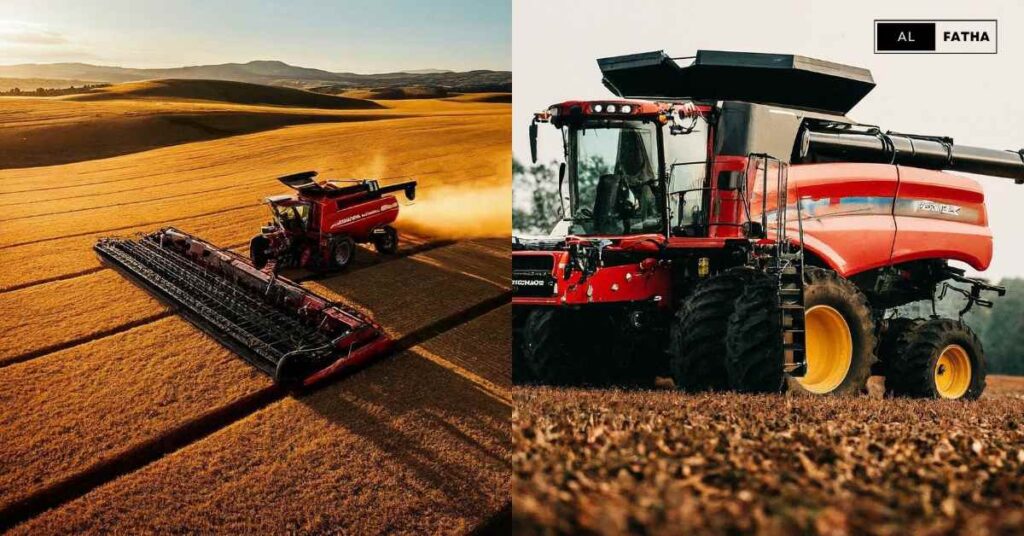

The adoption of harvesting drones and robotics in agriculture has direct implications for those working the fields – the farmers. Understanding their perspectives provides valuable insights into the impact of these technologies on daily operations, challenges faced, and the overall outlook for the future of farming.
Positive Impacts on Daily Operations
**1. Increased Efficiency and Productivity
Farmers who have integrated harvesting drones and robotics into their operations often highlight the significant increase in efficiency. Automated processes, precise data-driven decision-making, and reduced reliance on manual labor contribute to higher productivity, allowing farmers to focus on strategic aspects of their operations.
**2. Cost Savings and Resource Optimization
The automation of tasks, such as planting, harvesting, and crop monitoring, results in cost savings for farmers. Reduced labor costs, optimized resource utilization, and minimized wastage contribute to improved financial sustainability for farming operations.
Challenges and Learning Curves
**1. Initial Investment and Training
Many farmers acknowledge the initial investment required for acquiring and implementing harvesting drones and robotics. The cost of technology and the need for specialized training can pose challenges, particularly for smaller-scale farmers. However, as technology becomes more accessible, these barriers are gradually diminishing.
**2. Adaptation to Technology Changes
The rapid pace of technological advancements presents a challenge for some farmers in terms of adapting to new features and functionalities. Continuous learning and staying updated on the latest innovations can be a learning curve, but it is essential for harnessing the full potential of these technologies.
Overall Outlook and Future Expectations
**1. Optimism for Technological Advancements
Despite challenges, farmers generally express optimism about the future of harvesting drones and robotics. Anticipated technological advancements, including improved AI integration, enhanced durability of machines, and more user-friendly interfaces, contribute to a positive outlook.
**2. Contribution to Sustainable Agriculture
Farmers who have embraced harvesting drones and robotics often emphasize the positive environmental impact. Reduced chemical usage, minimized soil disturbance, and more precise resource management contribute to practices aligned with sustainable and eco-friendly agriculture.
Personal Testimonials from Farmers
**1. John Thompson, Midwest Farmer
“Integrating harvesting drones into our farm has been a game-changer. We’ve seen a significant boost in efficiency during planting and harvesting seasons. The ability to precisely monitor crop health and make data-driven decisions has not only increased our yield but also allowed us to be more environmentally conscious in our practices.”
**2. Maria Rodriguez, Vineyard Owner
“As a vineyard owner, the delicate nature of grapes requires precision in harvesting. The use of specialized drones has reduced grape damage, resulting in a higher-quality yield. It’s not just about efficiency; it’s about preserving the essence of our produce.”
Collective Vision for the Future
**1. Collaboration and Knowledge Sharing
Farmers express the importance of collaboration and knowledge-sharing within the farming community. Sharing experiences, insights, and best practices regarding the use of harvesting drones and robotics contribute to a collective vision for the future of agriculture.
**2. Adapting to Changing Agricultural Landscapes
With the ever-changing agricultural landscapes, farmers emphasize the need for adaptability. Embracing technological changes, staying informed, and fostering a spirit of innovation are seen as key elements in navigating the future of farming.
As we explore the perspectives of farmers, it becomes evident that the integration of harvesting drones and robotics is not just a technological shift but a transformative journey for those who toil the land. Their experiences, challenges, and optimism provide a holistic understanding of the role these technologies play in shaping the future of agriculture.
In the following sections, we will delve into educational initiatives in the agricultural technology sector and explore the broader societal impact of these transformative technologies.
Section 14: Educational Initiatives in Agricultural Technology
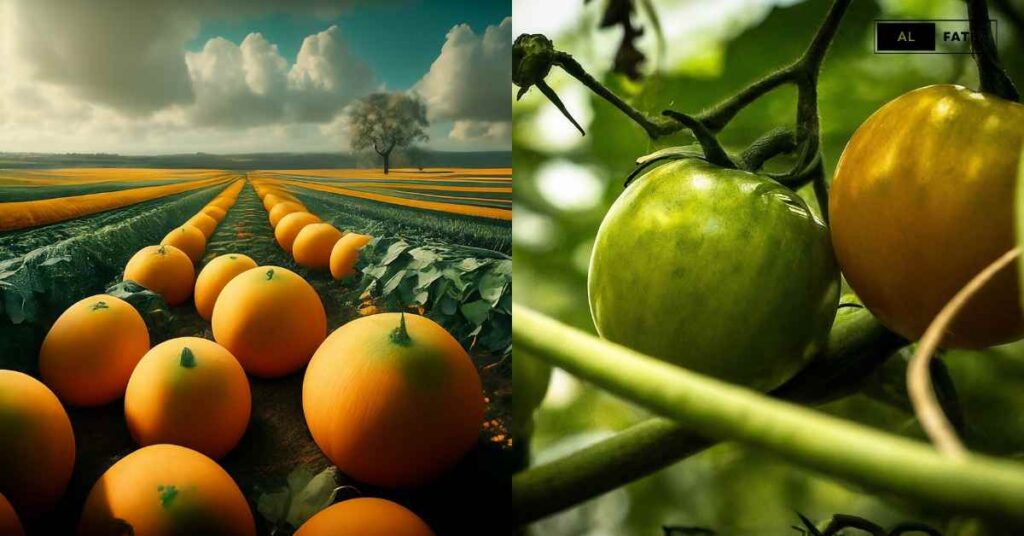

The integration of harvesting drones and robotics into agriculture requires a workforce equipped with the necessary skills and knowledge to navigate these advanced technologies. Educational initiatives play a crucial role in preparing future generations of farmers and agricultural professionals for the challenges and opportunities presented by these transformative technologies.
**1. Agricultural Technology Training Programs
**1.1 Curriculum Integration
Educational institutions are increasingly integrating courses on agricultural technology into their curricula. These programs cover topics such as drone operation, robotic systems management, and data analytics in agriculture. By incorporating practical, hands-on training, students gain valuable skills for the modern farming landscape.
**1.2 Professional Development Courses
Beyond traditional academic settings, professional development courses and workshops are offered to current farmers and agricultural professionals. These short-term programs focus on upskilling individuals in the operation and maintenance of harvesting drones, robotics, and precision agriculture technologies.
**2. Research and Innovation Hubs
**2.1 Collaborative Research Centers
Educational institutions collaborate with industry partners to establish research and innovation hubs focused on agricultural technology. These centers serve as platforms for interdisciplinary research, technological innovation, and the development of best practices in the application of harvesting drones and robotics.
**2.2 Field Trials and Demonstrations
Research hubs conduct field trials and demonstrations to showcase the practical applications of harvesting drones and robotics. These events not only serve as educational experiences for students and professionals but also contribute to knowledge dissemination within the broader farming community.
**3. Industry-Academia Partnerships
**3.1 Internship Programs
Industry-academia partnerships often include internship programs that provide students with real-world experience in working with harvesting drones and robotics. These hands-on opportunities foster a deeper understanding of the technologies and their applications in agricultural settings.
**3.2 Joint Research Projects
Collaborative research projects between educational institutions and industry players facilitate the development of cutting-edge solutions. These projects often address industry-specific challenges, driving innovation and contributing to the continuous improvement of harvesting drones and robotics.
**4. Extension Services for Farmers
**4.1 Farmers' Workshops and Training
Extension services offered by educational institutions include workshops and training sessions tailored for farmers. These sessions cover topics ranging from the basics of drone operation to advanced robotics applications, empowering farmers to leverage these technologies effectively.
**4.2 Mobile Learning Platforms
To reach a wider audience, educational initiatives leverage mobile learning platforms. These platforms offer farmers the flexibility to access educational content on harvesting drones and robotics at their own pace, enhancing their knowledge and skills on-the-go.
**5. Government Initiatives and Funding
**5.1 Government-Sponsored Programs
Governments play a crucial role in promoting educational initiatives in agricultural technology. Various countries offer grants, subsidies, and funding for institutions and individuals engaged in developing and delivering educational programs on harvesting drones and robotics.
**5.2 Incentives for Innovation
Governments may provide incentives for educational institutions and researchers involved in innovative projects related to agricultural technology. These incentives stimulate a culture of innovation, encouraging the development of new technologies and methodologies in the field.
Educational initiatives in agricultural technology are pivotal in ensuring a skilled workforce capable of harnessing the full potential of harvesting drones and robotics. By integrating practical training, collaborative research, and outreach programs, these initiatives contribute to the sustainable and effective adoption of advanced technologies in modern farming. In the following sections, we will explore the broader societal impact of harvesting drones and robotics and conclude with a call to action for accessing the transformative potential of these technologies.
Section 15: Conclusion
In conclusion, the integration of harvesting drones and robotics marks a paradigm shift in agriculture, transforming traditional farming practices into precision-driven, efficient processes.
As we navigate the diverse landscape of technological advancements, the perspectives of farmers, educational initiatives, and market trends collectively paint a picture of a sector on the brink of revolutionary change.
Challenges notwithstanding, the positive impacts on efficiency, sustainability, and productivity are reshaping the future of farming. It is evident that a collaborative approach, involving farmers, educational institutions, and industry stakeholders, is essential for realizing the full potential of these transformative technologies.
By embracing innovation, fostering knowledge-sharing, and navigating regulatory landscapes, we pave the way for a sustainable and technologically advanced agricultural future that benefits both farmers and the global community at large.
The journey towards a greener, more efficient, and resilient agriculture sector begins with the intelligent integration of harvesting drones and robotics, cultivating a future where technology and tradition converge for the betterment of our food systems.
Section 16: Frequently Asked Questions (FAQs)
Q1: What are harvesting drones and robotics in agriculture?
Harvesting drones and robotics refer to advanced technologies used in agriculture to automate and enhance various farming processes. These technologies include unmanned aerial vehicles (drones) equipped with specialized tools for tasks like crop monitoring and harvesting, as well as robotic systems designed for precision farming operations.
Q2: How do harvesting drones and robotics benefit farmers?
Harvesting drones and robotics offer several benefits to farmers, including increased efficiency, higher productivity, and cost savings. These technologies enable precise data-driven decision-making, optimize resource utilization, and contribute to sustainable farming practices by reducing environmental impact.
Q3: What educational initiatives are available for learning about harvesting drones and robotics?
Educational initiatives include curriculum integration in academic institutions, professional development courses, research and innovation hubs, industry-academia partnerships, and extension services for farmers. These programs aim to equip individuals with the skills and knowledge required to navigate and leverage advanced agricultural technologies.
Q4: What challenges do farmers face in adopting harvesting drones and robotics?
Farmers may encounter challenges such as high initial investment costs, technical complexity, and the need for continuous adaptation to evolving technologies. Overcoming these challenges often requires access to training programs, collaborative efforts, and support from regulatory frameworks.
Q5: How is the regulatory landscape shaping the use of harvesting drones and robotics in agriculture?
Regulatory bodies, such as the Federal Aviation Administration (FAA) in the USA and similar entities globally, oversee the use of drones in agriculture. Regulations address issues like drone registration, flight restrictions, and compliance with airspace rules. Ongoing changes in regulations reflect the need to balance technological innovation with safety and privacy concerns.
Q6: What is the future outlook for harvesting drones and robotics in agriculture?
The future of harvesting drones and robotics in agriculture looks promising, with anticipated advancements in AI, collaborative robotics, and sustainable practices. Global adoption is on the rise, driven by increased investment, collaborative research, and a collective vision for a more efficient and eco-friendly future of farming.
Q7: How do harvesting drones and robotics contribute to sustainable agriculture?
Harvesting drones and robotics contribute to sustainable agriculture by reducing chemical usage, minimizing soil disturbance, and enabling precise resource management. These technologies align with environmental and social impact goals, making them attractive for those seeking investments that prioritize positive contributions to the environment and communities.
Q8: How can individuals and businesses invest in the agricultural technology sector?
Investment opportunities in the agricultural technology sector include venture capital in AgTech startups, collaboration with technology companies, diversification of investment portfolios in established agricultural companies, and contributions to sustainable agriculture investments. These avenues offer a range of options for individuals and businesses looking to be part of the transformative journey in agriculture.